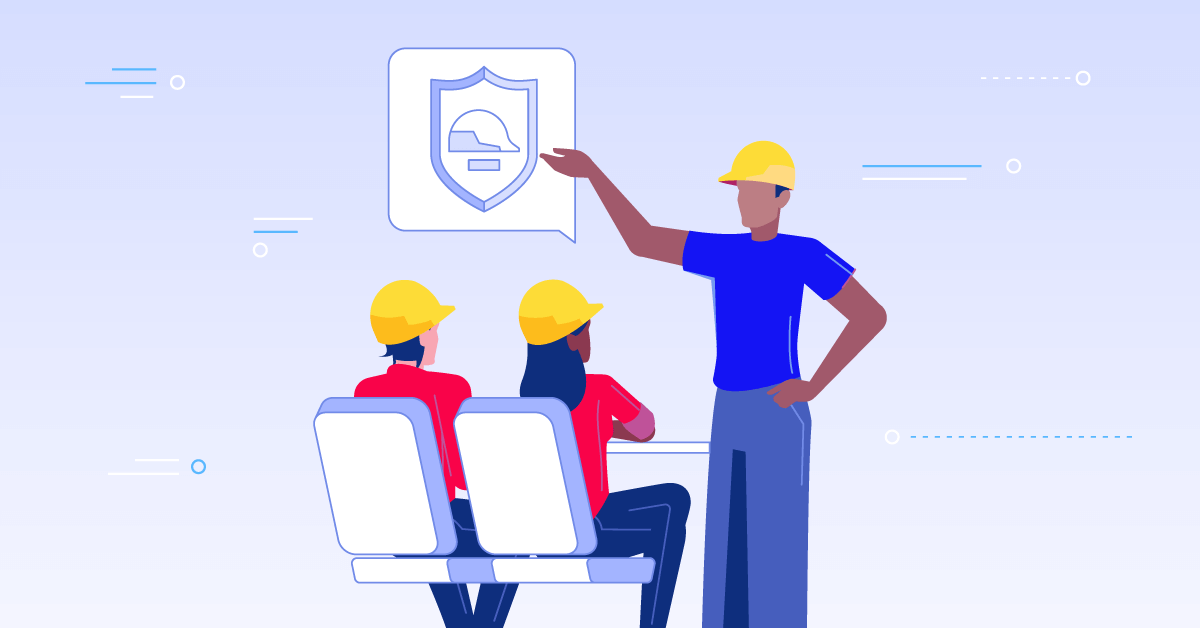Channel training is too often neglected. While channel partners, like reps and franchisees, might be doing critical work, it’s easy for them to fall ‘out of sight out of mind’ when it comes to making important business decisions. This can include new or redundant product and service offerings, or major changes to branding and how your product is perceived by the public.
So, how do you make sure that you’re not neglecting your channel training? How do you make sure that you are driving the best possible results for your business? Simple. Start by becoming aware of just how much of an impact channel partner enablement can really have.
Benefits of Channel Partner Training
Channel training should be offered to everyone delivering your service or selling your product. In other words, any representatives, franchisees, vendors, consultants, resellers, contractors, and distributors. These partners may be local or international.
Because they’re not in-house employees, channel partners don’t get to benefit from in-house programs that boost morale, stop them from feeling like outsiders and keep them motivated.
So, by offering comprehensive channel training, you’ll be investing in your channel partners. Partner enablement shows them that your business is willing to make an effort to keep them functioning at their best.
Transparency
Channel training emphasizes that the relationship between the company and its partners is mutually beneficial — in other words, success is a team effort. When both parties are working with this understanding, communication is more transparent and more frequent. Any need for intervention or help can be identified and addressed early on.
Another benefit of the transparent communication that partner enablement encourages is that any confusion around performance expectations can be resolved before it becomes a problem.
Regular channel training about the company’s goals, and the training that will be provided to help partners achieve them, keeps the latter motivated. Also, it often avoids those awkward conversations after a goal has been missed.
Expect each sales representative to pick up three new clients per quarter? Make this clear in your training and communication, and watch morale and performance results among your channel partners improve.
Customer retention
It’s common knowledge that it’s far more costly to gain a new customer than it is to keep an old one. A targeted partner enablement program that teaches channel partners to handle typical (and difficult) customer questions, points out the benefits of features that customers frequently overlook, and refers customers to helpful documentation, can lower your “churn rate” significantly.
Because the more your channel partners know about your business and products, the more your customers will know, too. And the more supported and knowledgeable your customers feel, the more loyal they’ll be to your brand.
Overall satisfaction
Need to increase your NPS (Net Promoter Score) among customers?
Training partners to apply best practices when engaging with customers can make a huge difference to ongoing sales figures – especially when it comes to conversations about customer satisfaction with your product. This could include training about customer check-ins and overall communication improvement.
Another benefit of this partner enablement strategy is that it produces more confident, well-rounded partners, who feel equipped to solve most customer issues.
Creating a Channel Partner Training Strategy That Works
You’re convinced – channel partner training is a must. But now you’re wondering how to best approach it. Ensure you work through the following steps to create a strategy that pays off.
1. Evaluate Channel Training Needs
First, get a thorough picture of what your partners need. Some partners, such as vendors or franchisees, might need general training in marketing your products. Sales representatives and distributors may need more on-hands product training, like how to use the product’s different features.
Determine what type of training would best enable your channel partners through regular surveys to identify frequently-encountered problems.
2. Align Your Partner Enablement Goals with Your KPIs
Your Key Performance Indicators (KPIs) track how the business is faring against specific performance goals. Channel partners can become distant from these KPIs, or have outdated KPIs in mind due to a lack of training.
Aligning your channel partner training to KPIs, and making the goals of the training program explicit and easy to understand, will help you get the most out of training. For example, if one of your business KPIs for the year is to increase customer retention by 25%, make sure this is clear in your training on customer retention strategies.
Aligning your channel training with your business KPIs will also help you measure the ROI of your partner training program because you can track performance improvement after training against your goals.

3. Choose the Right Platform
If you only have a small number of channel partners, then workshops and face-to-face training could be a great way to foster camaraderie among partners. But what if you have many partners, and worse, they’re all over the world?
This is where using a learning management system (LMS) can make all the difference. LMSs allow channel partners to interact with your training content and assessments in their own time, without needing to travel or take too much time out of their workdays.
Your choice of LMS for channel partner training will depend on factors like your budget and the features you need, for example, quizzes. Evaluate the options available and compare how they meet your needs for the price. Chances are, you’ll find an LMS that offers just the right combination.
4. Motivate Channel Partners
Clear expectation management, a sense of reward and feeling like part of the business culture are all important for keeping partners motivated.
Once you identify your training goals, break them down into milestones that partners can work through during the program. This introduces opportunities to “top-up” on motivation by recognizing your partners’ work, while also making training more manageable.
You may offer certificates or other incentives for completing sections of training, such as product knowledge certification. These incentives can be tracked on leaderboards to incentivize friendly competition.
Another way to motivate your channel partners to complete training and perform better is to bake your business’ values into your training. Make sure they understand what the business values in its employees, partners and customers, and the role that channel partners play in representing the culture of the business.
5. Make Communication Easy
Think about ways that you could build communication into your partner relationships and channel training.
Use LMS features like direct messaging in discussions and forums to make it quick and simple to ask questions. These features can also allow partners to communicate with and learn from other partners.
Making it super easy to ask questions (and receive answers quickly) means that your training materials, sales documentation, product information and other resources are more likely to be interpreted correctly.
6. Stage Your Training
Training in the workplace is seldom a once-off event, and the same should be true for channel training. Break your training up into stages that partners complete in sequence. This makes it easier to keep them up to date with the latest developments, without overwhelming them with information.
Multi-level training programs delivered over an extended period of time will also keep your channel partners engaged with your product or service, and in tune with your goals.
Get the Most Out of Your Partners Through Training
Using a strategic approach to channel training to keep your channel partners on the same page and driving results is simple. Just follow the guidelines we’ve provided here and you’ll be well on your way to more motivated partners and happier customers.
If you’re juggling multiple channel partners, why not sign up for a free eFront live demo? The convenience and variety of features offered may just be a perfect fit for training your channel partners to deliver the best results.


